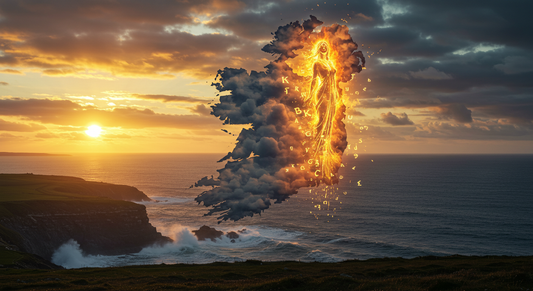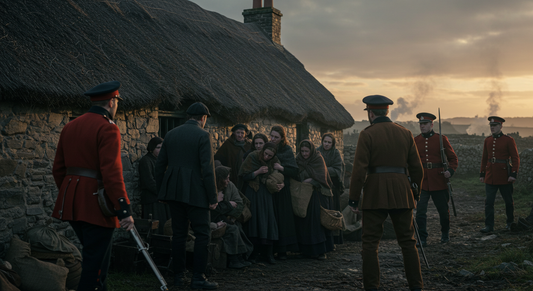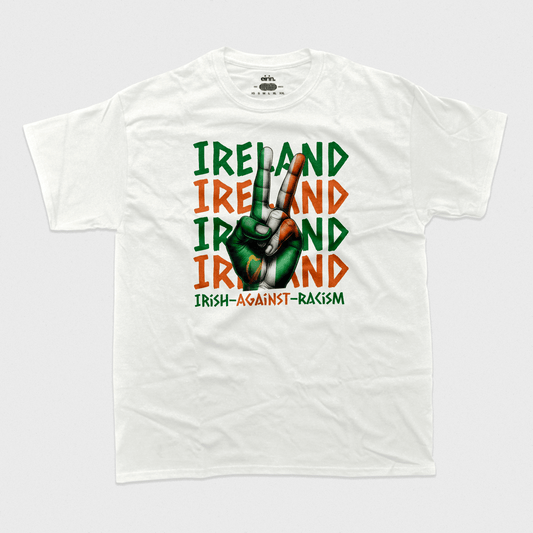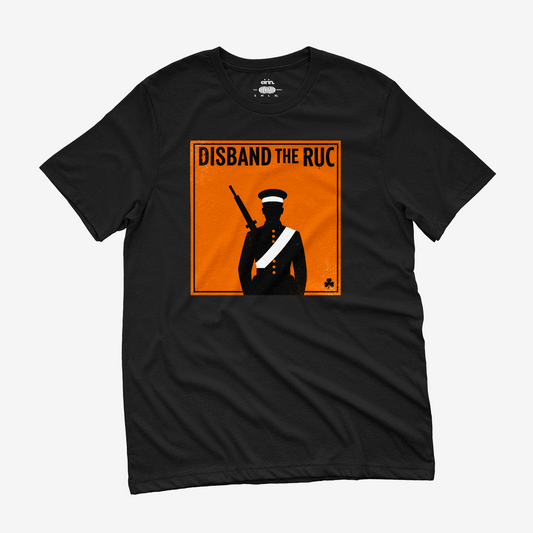The Fire That Never Died
There is a wind that sweeps across Ireland unlike any other.
It carries the scent of rain and smoke, of sea salt and wild heather, but beneath it lies something older — something eternal.
It is the breath of rebellion.
You can feel it in the hush before dawn at the foot of the Wicklow Mountains, where the mist curls like ghosts over hidden glens.
You can hear it in the echo of a bodhrán beating through a crowded pub, or in the lilt of the Irish tongue spoken quietly, stubbornly, as if in defiance of time itself.
This is not a memory — it is an inheritance.
Because rebellion in Ireland was never merely a moment in history.
It was, and still is, a way of being.
For centuries, others tried to tame the Irish spirit — through war, through famine, through silence.
But every time they did, the flame only shifted form.
It leapt from battlefield to poem, from banner to song.
It hid in the words of a grandmother telling stories by the fire.
It lived in every name, every prayer, every promise whispered to the land.
Rebellion, in Ireland, was never extinguished.
It simply learned how to endure.

The Historical Flame
The Irish story has always been one of defiance — sometimes loud, sometimes whispered, but always burning.
In 1798, the fields of Wexford blazed with the courage of the United Irishmen.
They were farmers and poets, schoolteachers and dreamers, marching under the banner of liberty and fraternity, hoping to unite Catholic and Protestant in one cause — freedom.
They fought not just with pikes, but with conviction, believing that an island divided could never truly be free.
Their rebellion was crushed, but their ideals — those wild, impossible ideals — seeded something deeper in the soil.
A century later, the spirit rose again.
Dublin, Easter 1916.
A handful of men and women stood against an empire, knowing well they could not win.
They read aloud a proclamation that began with the words “Irishmen and Irishwomen” — the sound of inclusion, of pride, of defiance in its purest form.
As gunfire rang through the streets, people watched from behind shuttered windows.
Many thought it madness.
But the world remembered them not for defeat, but for daring.
And when the rising failed, something miraculous happened.
The nation did not fall silent — it began to sing.
From the ashes of rebellion came poetry, song, and story.
Yeats, stirred by both beauty and blood, wrote of a “terrible beauty born.”
And though the leaders of the Rising were executed, their words lived longer than any bullet could silence.

Rebellion Beyond Battlefields
But rebellion in Ireland has never been only about war.
It has always been a matter of the soul.
When swords fell quiet, language took their place.
For centuries, Irish was forbidden in schools, mocked as a relic, pushed to the edges of memory.
Yet, in kitchens and fields, parents still whispered it to their children — soft, secret acts of defiance.
Every “go raibh maith agat,” every “slán,” was a small victory.
A refusal to let identity be erased.
The Gaelic Revival of the late 19th and early 20th centuries was as powerful as any uprising.
While others rebuilt cities, Ireland rebuilt its spirit.
Writers, musicians, and storytellers became rebels of a different kind — preserving what could have been lost forever.
Lady Gregory collected folktales that might otherwise have vanished.
Douglas Hyde founded the Gaelic League to protect the language from extinction.
And poets like Yeats and Pearse wove myth and nationhood into one.
This was rebellion not through violence, but through creation.
Not through destruction, but remembrance.
To speak Irish, to tell the old stories, to keep the music alive — these were weapons too.
Because they reminded the world that Ireland was more than a piece of land.
It was a living soul.

The Modern Rebellion
Today, the world looks different.
Empires have crumbled.
Borders have blurred.
But the spirit that drove Ireland through centuries of struggle remains — only now, it has found new expressions.
Rebellion today doesn’t always wear a uniform or raise a flag.
Sometimes, it’s a tattoo in Ogham script, a line of poetry shared on a street wall, or a young person learning Irish not for school, but for pride.
It’s in artists reimagining Celtic mythology through music and design.
It’s in people across the world — in Boston, Melbourne, Belfast, and Galway — who still feel Ireland in their bones and refuse to let that connection fade.
To embrace your roots in a world that tells you to forget them — that is rebellion.
To wear your heritage proudly, to speak your language, to honour your ancestors — that is rebellion.
To choose authenticity over assimilation — that, too, is rebellion.
Rebellion now is not about fighting others; it’s about not losing yourself.
In an age of noise and conformity, the quietest thing can be the most revolutionary act — to stay true to who you are.
So when someone wears a Gaelic phrase across their chest, when they sing an old song or tell an ancient myth, they are not being nostalgic.
They are continuing a lineage — one that stretches back to every person who ever refused to bow.

Lessons for the Present Generation
Every generation inherits a flame — not to keep it safe, but to let it burn.
The rebels of the past fought for freedom, but what they truly defended was identity — the right to be Irish, in all its contradictions and colours.
Today, our battles are quieter, but no less important.
They are fought against forgetting, against apathy, against the slow erosion of meaning.
We fight not to own land, but to own our story.
Rebellion today can mean standing firm in your truth when it’s easier to blend in.
It can mean choosing integrity over approval, art over algorithm, heritage over hype.
It can mean remembering where you come from — and why it matters.
Because rebellion, at its heart, was never about destruction.
It was about love — love of freedom, of culture, of self.
It was about believing that even in darkness, the human spirit can light its own way.
And maybe that’s the lesson the rebels left us:
That defiance is not anger — it is courage.
That pride is not arrogance — it is remembrance.
That we carry their fire not to fight old wars, but to illuminate new paths.

The Flame Is Ours Now
Stand on any Irish hill at sunset and you can still feel it — that quiet, unbroken heartbeat of the island.
It lives in the ruins and the rivers, in the stories whispered across oceans.
It lives in every soul who calls themselves Irish — or simply feels it, deep down, without needing to explain why.
Rebellion is not gone.
It has evolved.
It lives in creativity, in language, in love, in the refusal to forget.
The same fire that burned in 1798, that lit the streets of Dublin in 1916, now burns in us — the generation that carries memory in modern form.
We are not the children of defeat.
We are the descendants of endurance.
So speak your truth.
Sing your songs.
Write your own verses in the long story of Ireland.
Because rebellion was never just theirs — it’s ours now.
And as long as we remember who we are,
the fire will never die.
At EIRIN Apparel, we believe rebellion isn’t history — it’s heritage.
Our designs are inspired by the same spirit that shaped Ireland’s story.
If you’d like to explore more, check out some of our collections below or view the hottest new released on our New & Trending Collection!

